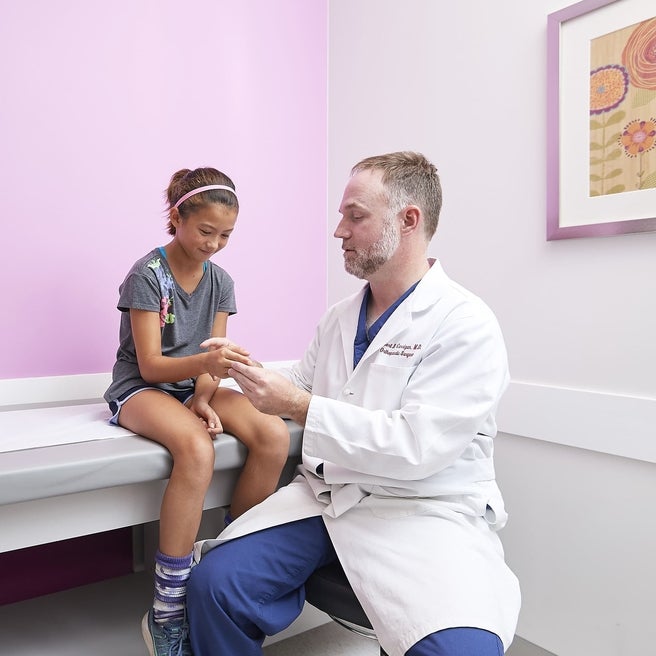What is syndactyly?

Syndactyly is the medical term for webbed or conjoined fingers or toes. Syndactyly is the most common malformation of the limbs, affecting about one in every 2,000-3,000 children born each year.
Syndactyly can be classified as:
- Simple, where fingers are joined by skin and soft tissue
- Complex, where the fingers are joined by bone
- Complete, where the whole fingers are fused together to the tips
- Incomplete, when fingers are joined only partially
In most children, the affected fingers are connected only by skin; it is rare that the bones are also fused together.
If left untreated, webbed fingers can impair finger growth and hand function and dexterity.
Causes
Syndactyly occurs while a baby is still developing in the womb. During the sixth to eighth week of development, an infant’s fingers and toes separate. Syndactyly occurs when the digits fail to fully separate into individual fingers and toes.
This congenital difference is often passed down through families. There is a family history in 10 to 40 percent of cases of syndactyly. In rare cases, syndactyly is associated with other genetic abnormalities and syndromes, including Poland syndrome, Apert syndrome and Carpenter syndrome.
Testing and diagnosis
Sometimes, syndactyly can be diagnosed before birth during an ultrasound, though it is usually identified after birth.
In order to determine the best course of treatment for your child, doctors at Children’s Hospital of Philadelphia (CHOP) will conduct a thorough physical exam and take a family medical history.
Imaging tests like X-rays may be used to look at the underlying structure of your child’s hands and determine whether the bones are fused.
Genetic testing and imaging of other parts of the body may be recommended to identify related genetic syndromes and abnormalities.
Treatment
In cases of simple syndactyly of the middle three digits (i.e. the index, middle and ring fingers), surgery to separate the webbing between fingers or toes should be considered before your child is 2 years old. It is important for your child to have maximum hand function during early childhood when she is rapidly developing fine and gross motor skills.
If your child has simple syndactyly that involves the thumb or small finger (also known as the border fingers of the hand), surgery to separate the conjoined fingers is recommended during the first year of your child’s life. The thumb and small finger are of significantly different lengths than their neighboring fingers and early separation will allow all affected fingers to develop more normally and grow equally.
Complex syndactyly should also be repaired by age 1. Early repair can prevent the boney fusion of fingers from causing worsening finger deformities, and allow the digits to grow.

As part of syndactyly surgery, reconstruction of the formerly webbed space between fingers and nail folds, as well as appropriate skin grafting, will be done to optimize the look and function of your child’s fingers.
Your child will be able to go home the same day as her syndactyly repair surgery. She will be in a long arm cast for two weeks after surgery.
Follow-up care
Two weeks after surgery, your child will be examined by the hand surgeon, and again six weeks postoperatively. At the two week visit, your child’s long arm cast will be removed. Most children will not require splinting or any hand therapy.
Your child will need to return to the hand surgeon for several annual visits throughout early childhood to ensure she is developing appropriate hand function. This is especially important as she learns skills such as writing and playing sports.
Resources to help
Syndactyly Resources
Hand and Arm Disorders Program Resources
We have compiled resources to help you find answers to your questions and feel confident with the care you are providing your child.
